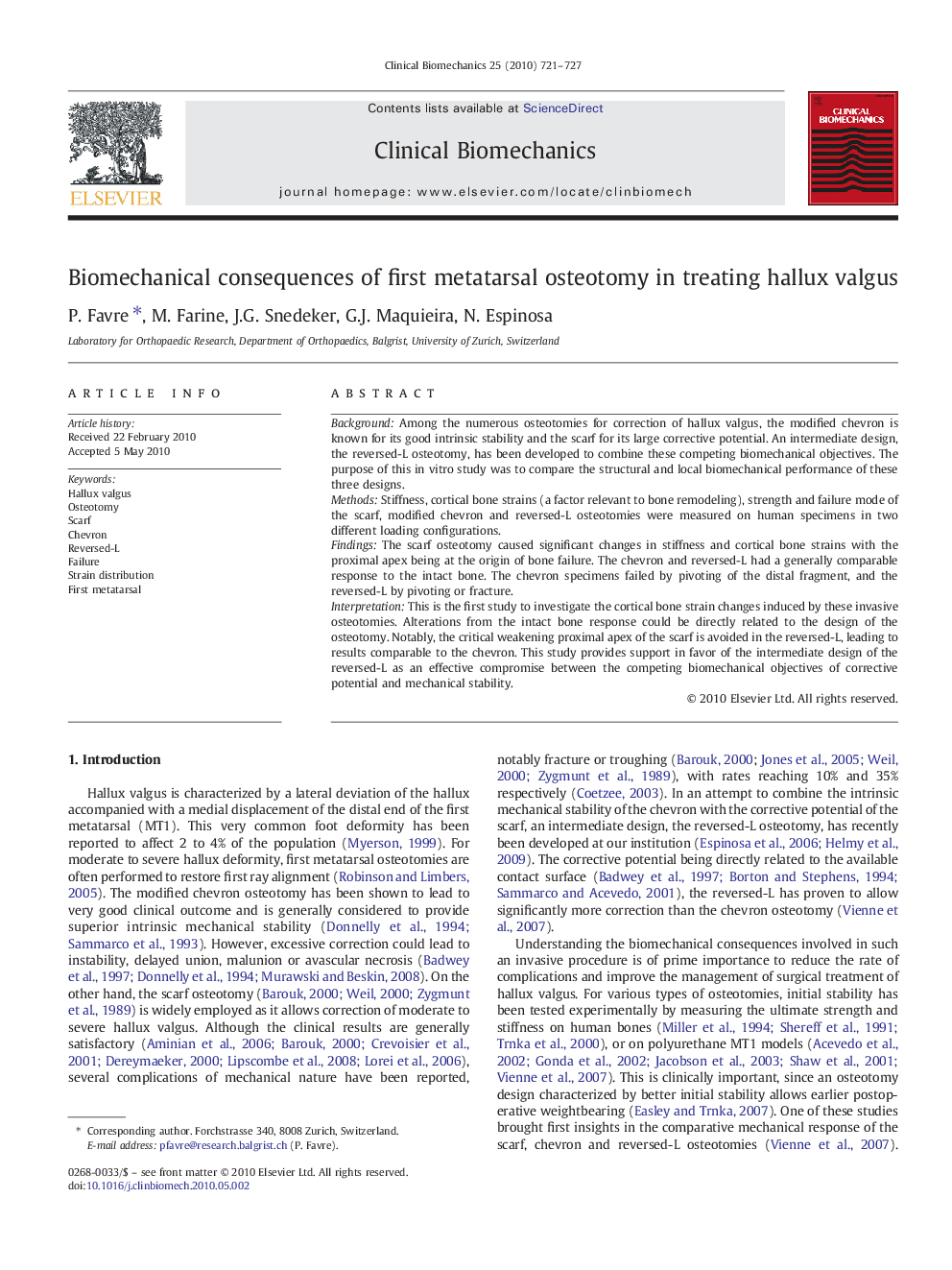| Article ID | Journal | Published Year | Pages | File Type |
|---|---|---|---|---|
| 4050950 | Clinical Biomechanics | 2010 | 7 Pages |
BackgroundAmong the numerous osteotomies for correction of hallux valgus, the modified chevron is known for its good intrinsic stability and the scarf for its large corrective potential. An intermediate design, the reversed-L osteotomy, has been developed to combine these competing biomechanical objectives. The purpose of this in vitro study was to compare the structural and local biomechanical performance of these three designs.MethodsStiffness, cortical bone strains (a factor relevant to bone remodeling), strength and failure mode of the scarf, modified chevron and reversed-L osteotomies were measured on human specimens in two different loading configurations.FindingsThe scarf osteotomy caused significant changes in stiffness and cortical bone strains with the proximal apex being at the origin of bone failure. The chevron and reversed-L had a generally comparable response to the intact bone. The chevron specimens failed by pivoting of the distal fragment, and the reversed-L by pivoting or fracture.InterpretationThis is the first study to investigate the cortical bone strain changes induced by these invasive osteotomies. Alterations from the intact bone response could be directly related to the design of the osteotomy. Notably, the critical weakening proximal apex of the scarf is avoided in the reversed-L, leading to results comparable to the chevron. This study provides support in favor of the intermediate design of the reversed-L as an effective compromise between the competing biomechanical objectives of corrective potential and mechanical stability.
